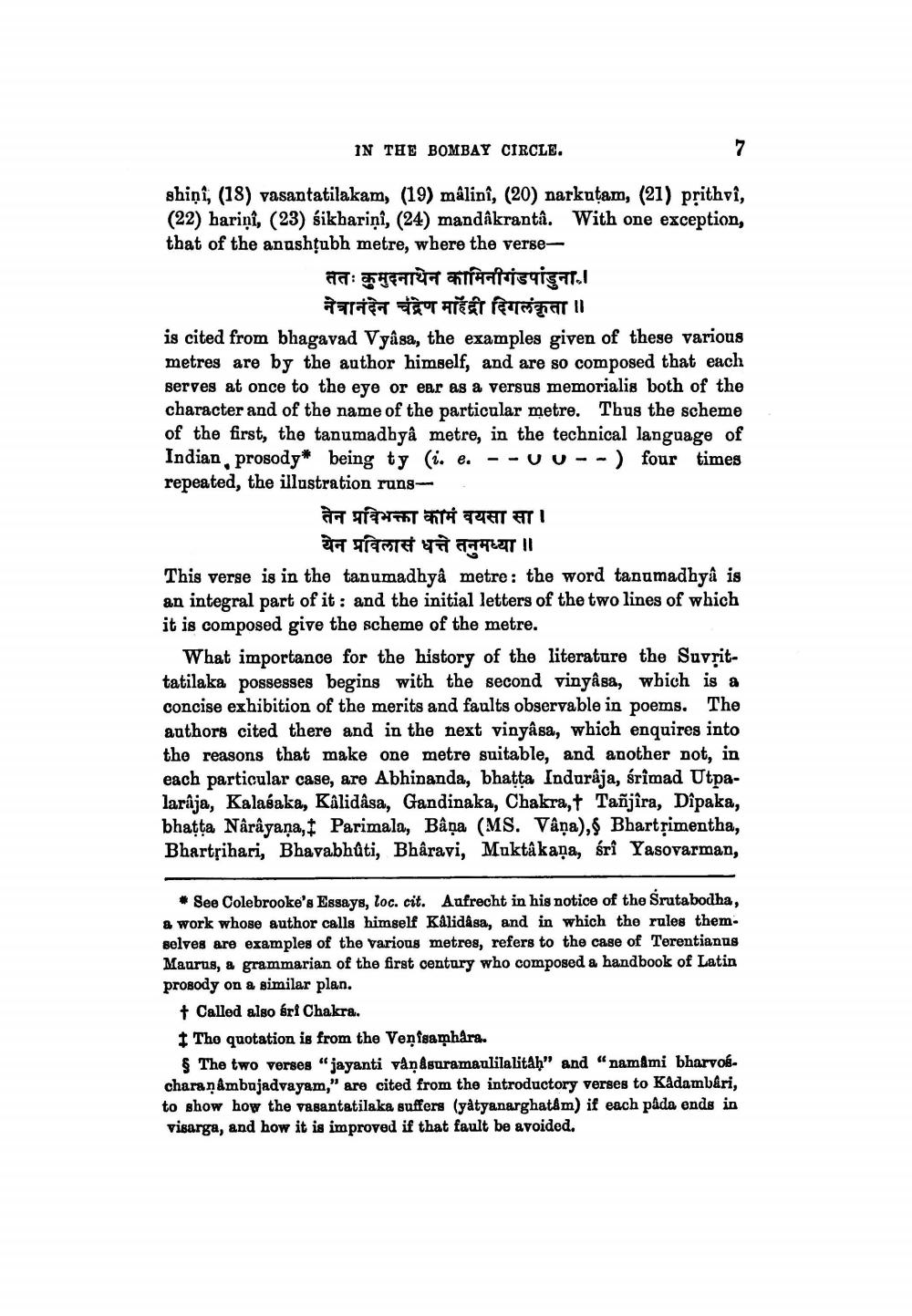________________
IN THE BOMBAY CIRCLE.
shiņi, (18) vasantatilakam, (19) málinî, (20) narkutam, (21) prithvi, (22) bariņi, (23) sikbarini, (24) mandákranta. With one exception, that of the anashțubh metre, where the verse
ततः कुमुदनाथेन कामिनीगंडपांडुना.।
नेत्रानंदन चंद्रेण माहेंद्री दिगलंकृता॥ is cited from bhagavad Vyâsa, the examples given of these various metres are by the author himself, and are so composed that each serves at once to the eye or ear as a versus memorialis both of the character and of the name of the particular metre. Thus the scheme of the first, the tanumadhyâ metre, in the technical language of Indian, prosody* being ty (i. e. --uv- -) four times repeated, the illustration runs
तेन प्रविभक्ता कामं वयसा सा।
येन प्रविलासं धत्ते तनुमध्या ॥ This verse is in the tanumadhyâ metre: the word tanamadhyâ is an integral part of it: and the initial letters of the two lines of which it is composed give the scheme of the metre.
What importance for the history of the literature the Suvrittatilaka possesses begins with the second vinyâsa, which is a concise exhibition of the merits and faults observable in poems. The authors cited there and in the next vinyâsa, which enquires into the reasons that make one metre suitable, and another not, in each particular case, are Abhinanda, bhatta Indaraja, srimad Utpalaraja, Kalasaka, Kálidâsa, Gandinaka, Chakra,t Tañjîra, Dipaka, bhatta Nârâyaņa, I Parimala, Bâņa (MS. Vâņa), Bhartsimentha, Bhartrihari, Bhavabhậti, Bhâravi, Muktakana, śri Yasovarman,
# See Colebrooke's Essays, loc. cit. Aufrecht in his notice of the Srutabodha, & work whose author calls himself Kilidâsa, and in which the rules them. selves are examples of the various metres, refers to the case of Terentianus Maurus, a grammarian of the first century who composed a handbook of Latin prosody on a similar plan. + Called also ári Chakra.
The quotation is from the Venisamhara. $ The two verses "jayanti van&guramaulilalitah" and "namami bharvos. charanambujadvayam," are cited from the introductory verses to Kadambari, to show how the vasantatilaka suffers (yatyanarghatám) if each pada ends in visarga, and how it is improved if that fault be avoided.




